Magnificent Hattusa: Capital Of The Hittite Empire
A. Sutherland - AncientPages.com - Hattusa was the capital of the kingdom of the Hittites in the late Bronze Age. In the 2nd millennium BC, the kingdom stretched from the Aegean across Anatolia, Turkey, northern Syria, and to the Euphrates River.
In ancient times, it was a great city, and even today, its magnificent ruins attest to the greatness of this place. The population of the old capital is estimated to have been 50,000 at its most.
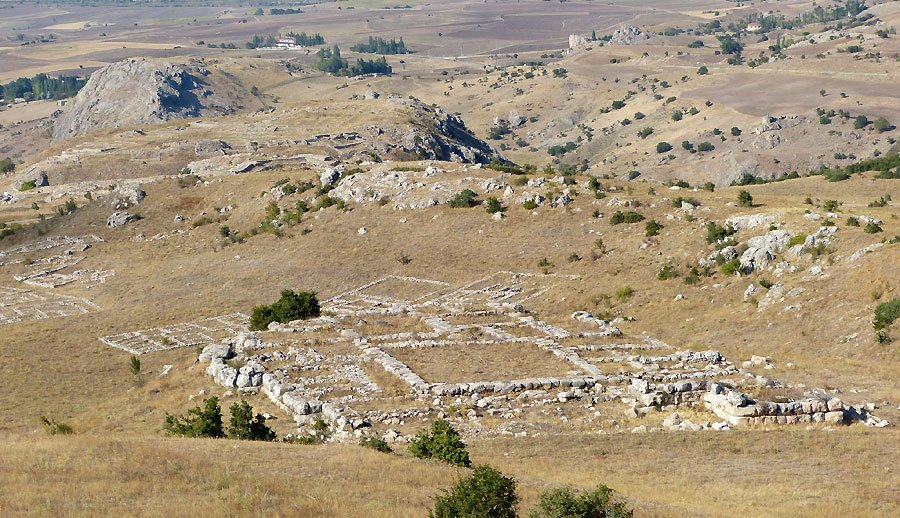 Hattusa is one of Turkey’s great ruins of the capital of the Hittite Empire.
Hattusa is one of Turkey’s great ruins of the capital of the Hittite Empire.
Hattusa has a rich history with its six-kilometre walls surrounding the ancient city, its monumental gates, the 71-meter-long underground passage, and 31 temples unearthed so far. The Lion Gate, the King Gate, and the Yazılıkaya Open Air Temple are some of the impressive landmarks.
The first settling around Hattusa took place in the 6th millennium BC during the Chalcolithic period, when small, widely scattered hamlets appeared, most particularly on mountain slopes and rocky outcroppings. Late in the 3rd millennium BC, towards the end of the Early Bronze Age, a Hattian settlement developed, marking the beginning of continuous occupation at the site.
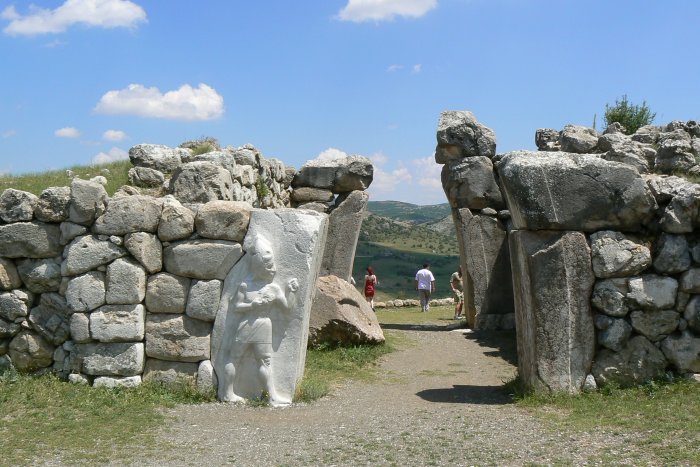 Hattusha - The King Gate Image credit: Wikipedia
Hattusha - The King Gate Image credit: Wikipedia
The Hittites ruled the central Anatolian kingdom of Hatti from c. 1900 - to 800 BCE. They formed the earliest known Anatolian civilization and employed an advanced system of government based on an established legal system. Their military force was well trained, well equipped, and employed chariots that were the lightest and fastest of their time.
Hattusa consists of two sites: the Lower City and the Upper City. The Hittites built their capital on a site that could be well defended.
The ruins of the upper city’s fortification reveal that the city was surrounded by a double wall (forming a perimeter of roughly 8 km) with more than a hundred towers and, as far as is known today, five gateways: two in the west, Lion’s Gate in the south-west, the King’s Gate in the south-east and a procession gate, the Sphinx Gate in the south of the city.
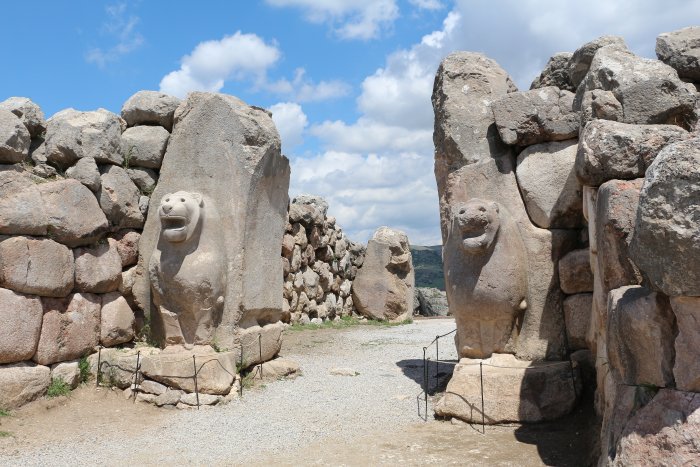 Hattusa - The Lion Gate in the south-west. Image credit: Bernard Gagnon - CC BY-SA 2.5
Hattusa - The Lion Gate in the south-west. Image credit: Bernard Gagnon - CC BY-SA 2.5
To the north, beyond the walls, there was a necropolis cut into the rock at Osmankayasi and the great sanctuary of Yazilikaya, whose walls decorated with bas-reliefs are the undisputed masterpiece of Hittite art.
Hattusa - The Sphinx Gate. Adobe Stock - marista
The best-preserved ruin of a Hittite Temple from the 13th century B.C., known as the Great Temple, is located in the Lower City. The Great Temple was dedicated to the god of storms and the goddess of the Sun, Arinna, and surrounded by an array of buildings, including stores.
Thousands of cuneiform tablets were found in this area. One of the most important discoveries has been the cuneiform royal archives of clay tablets, consisting of official correspondence and contracts, legal codes, procedures for cult ceremonies, oracular prophecies, and literature of the ancient Near East.
One particularly important tablet, currently on display at the Istanbul Archaeology Museum, details the terms of a peace settlement reached years after the Battle of Kadesh between the Hittites and the Egyptians under Ramesses II in 1259 or 1258 BC.
Twelve Hittite gods of the Underworld in the nearby Yazılıkaya, a sanctuary of Hattusa. Image credit: WikipediaOther temples of similar date and shape, albeit generally smaller, are situated in the Upper City, which mostly consisted of a temple city for the gods and goddesses of the Hittite and Hurrian pantheon. The remains of a densely inhabited city district were unearthed in the Lower City, where their foundations and arrangement can still be seen in the area north of the Great Temple.
The site, discovered in 1834, was not comprehensively excavated until 1906. The site has been on the World Heritage List since 1986.
Written by – A. Sutherland AncientPages.com Staff Writer
Copyright © AncientPages.com All rights reserved. This material may not be published, broadcast, rewritten or redistributed in whole or part without the express written permission of AncientPages.com
Expand for referencesMore From Ancient Pages
-
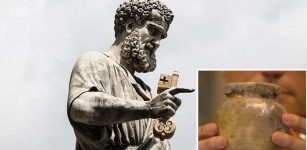 Are Bones Of Apostle Peter Hidden Inside A 1000-Year-Old Roman Church?
Archaeology | Sep 16, 2017
Are Bones Of Apostle Peter Hidden Inside A 1000-Year-Old Roman Church?
Archaeology | Sep 16, 2017 -
 Neanderthals Of The Mediterranean Areas Became Extinct But Not Because Of Climate
Archaeology | Jul 20, 2020
Neanderthals Of The Mediterranean Areas Became Extinct But Not Because Of Climate
Archaeology | Jul 20, 2020 -
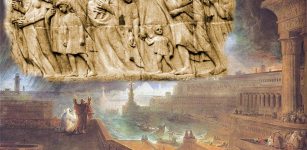 Is Ipuwer Papyrus A Report Of An Ancient Catastrophe?
Artifacts | Aug 7, 2017
Is Ipuwer Papyrus A Report Of An Ancient Catastrophe?
Artifacts | Aug 7, 2017 -
 On This Day In History: King Louis XVI Was Executed By Guillotine In Paris – On Jan 21, 1793
News | Jan 21, 2017
On This Day In History: King Louis XVI Was Executed By Guillotine In Paris – On Jan 21, 1793
News | Jan 21, 2017 -
 Ancient Mystery Of The Man Mound And The Giant With Horns In Wisconsin
Featured Stories | Mar 1, 2021
Ancient Mystery Of The Man Mound And The Giant With Horns In Wisconsin
Featured Stories | Mar 1, 2021 -
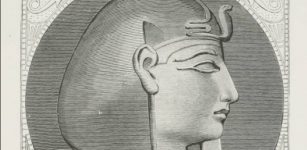 Pharaoh Merneptah – His Giant Sarcophagus And Unique Victory Stele
Featured Stories | Apr 17, 2018
Pharaoh Merneptah – His Giant Sarcophagus And Unique Victory Stele
Featured Stories | Apr 17, 2018 -
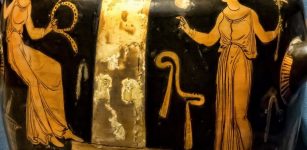 Apulian Secrets: Ancient Burial Rituals Shed Light On A Culture That Left No Written History
Archaeology | Jan 12, 2016
Apulian Secrets: Ancient Burial Rituals Shed Light On A Culture That Left No Written History
Archaeology | Jan 12, 2016 -
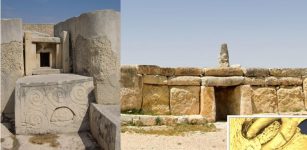 First People To Inhabit Malta Arrived 700 Years Earlier Than Previously Thought
Archaeology | Mar 20, 2018
First People To Inhabit Malta Arrived 700 Years Earlier Than Previously Thought
Archaeology | Mar 20, 2018 -
 Excavations of the Aşıklı Mound, Cappadocia , Turkey
Civilizations | Aug 22, 2015
Excavations of the Aşıklı Mound, Cappadocia , Turkey
Civilizations | Aug 22, 2015 -
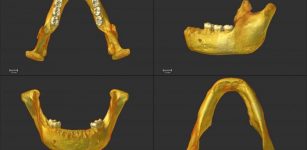 Settlement Of Europe: Result Of Several Migration Waves By A Single Population – Study
Archaeology | Jul 17, 2020
Settlement Of Europe: Result Of Several Migration Waves By A Single Population – Study
Archaeology | Jul 17, 2020 -
 Historic Shipwreck Margaret A. Muir Found In Lake Michigan, Wisconsin
Archaeology | Jul 29, 2024
Historic Shipwreck Margaret A. Muir Found In Lake Michigan, Wisconsin
Archaeology | Jul 29, 2024 -
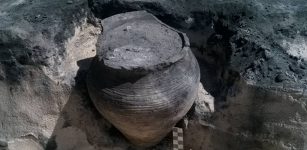 Extraordinary Discovery: Clay Vessel With Sour Soup For The Gods Found In Medieval Hut
Archaeology | Jun 4, 2017
Extraordinary Discovery: Clay Vessel With Sour Soup For The Gods Found In Medieval Hut
Archaeology | Jun 4, 2017 -
 Does A Baffling Artifact Offer Evidence Of Ancient Extraterrestrial Visitation In New Zealand? – The Discovery – Part 1
Ancient Mysteries | Jul 20, 2020
Does A Baffling Artifact Offer Evidence Of Ancient Extraterrestrial Visitation In New Zealand? – The Discovery – Part 1
Ancient Mysteries | Jul 20, 2020 -
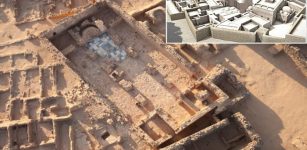 Virtual Nubia: Sudan’s Medieval Monasteries Digitally Reconstructed By Polish Archaeologists
News | Oct 8, 2020
Virtual Nubia: Sudan’s Medieval Monasteries Digitally Reconstructed By Polish Archaeologists
News | Oct 8, 2020 -
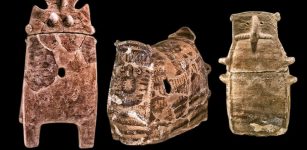 Blue Eyed People In Northern Israel 6,500 Years Ago: New DNA Results
Archaeology | Aug 22, 2018
Blue Eyed People In Northern Israel 6,500 Years Ago: New DNA Results
Archaeology | Aug 22, 2018 -
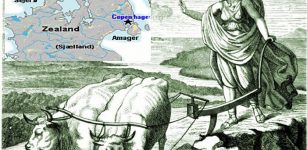 Gefjon: Norse Fertility Goddess Who Knew Humans’ Fates, And Plowed Away Part Of Sweden To Give It To Denmark
Featured Stories | Nov 22, 2019
Gefjon: Norse Fertility Goddess Who Knew Humans’ Fates, And Plowed Away Part Of Sweden To Give It To Denmark
Featured Stories | Nov 22, 2019 -
 More Than A Meteorite: New Clues About The Demise Of Dinosaurs
Paleontology | Dec 5, 2023
More Than A Meteorite: New Clues About The Demise Of Dinosaurs
Paleontology | Dec 5, 2023 -
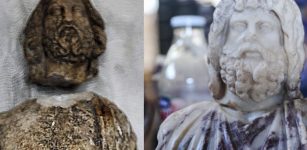 Statues Of Serapis Sky God And Asclepios God Of Medicine Unearthed In Ancient City Of Kibyra
Artifacts | Nov 26, 2020
Statues Of Serapis Sky God And Asclepios God Of Medicine Unearthed In Ancient City Of Kibyra
Artifacts | Nov 26, 2020 -
 Has AI Found An Unknown Human Ancestor?
Archaeology | Jan 17, 2019
Has AI Found An Unknown Human Ancestor?
Archaeology | Jan 17, 2019 -
 Unique Glimpse Into The Secrets Of Mysterious Ancient Egyptian Manuscripts And Sacred Tablets Deliberately Hidden From The Outside World
Featured Stories | Dec 29, 2024
Unique Glimpse Into The Secrets Of Mysterious Ancient Egyptian Manuscripts And Sacred Tablets Deliberately Hidden From The Outside World
Featured Stories | Dec 29, 2024

